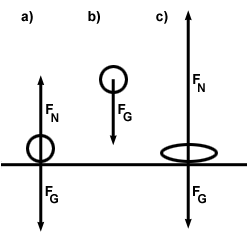Please wait while we process your payment
If you don't see it, please check your spam folder. Sometimes it can end up there.
If you don't see it, please check your spam folder. Sometimes it can end up there.
Please wait while we process your payment

By signing up you agree to our terms and privacy policy.
Don’t have an account? Subscribe now
Create Your Account
Sign up for your FREE 7-day trial
By signing up you agree to our terms and privacy policy.
Already have an account? Log in
Your Email
Choose Your Plan
Individual
Group Discount
Save over 50% with a SparkNotes PLUS Annual Plan!
 payment page
payment page
Purchasing SparkNotes PLUS for a group?
Get Annual Plans at a discount when you buy 2 or more!
Price
$24.99 $18.74 /subscription + tax
Subtotal $37.48 + tax
Save 25% on 2-49 accounts
Save 30% on 50-99 accounts
Want 100 or more? Contact us for a customized plan.
 payment page
payment page
Your Plan
Payment Details
Payment Summary
SparkNotes Plus
You'll be billed after your free trial ends.
7-Day Free Trial
Not Applicable
Renews July 16, 2025 July 9, 2025
Discounts (applied to next billing)
DUE NOW
US $0.00
SNPLUSROCKS20 | 20% Discount
This is not a valid promo code.
Discount Code (one code per order)
SparkNotes PLUS Annual Plan - Group Discount
Qty: 00
SparkNotes Plus subscription is $4.99/month or $24.99/year as selected above. The free trial period is the first 7 days of your subscription. TO CANCEL YOUR SUBSCRIPTION AND AVOID BEING CHARGED, YOU MUST CANCEL BEFORE THE END OF THE FREE TRIAL PERIOD. You may cancel your subscription on your Subscription and Billing page or contact Customer Support at custserv@bn.com. Your subscription will continue automatically once the free trial period is over. Free trial is available to new customers only.
Choose Your Plan
This site is protected by reCAPTCHA and the Google Privacy Policy and Terms of Service apply.
For the next 7 days, you'll have access to awesome PLUS stuff like AP English test prep, No Fear Shakespeare translations and audio, a note-taking tool, personalized dashboard, & much more!
You’ve successfully purchased a group discount. Your group members can use the joining link below to redeem their group membership. You'll also receive an email with the link.
Members will be prompted to log in or create an account to redeem their group membership.
Thanks for creating a SparkNotes account! Continue to start your free trial.
We're sorry, we could not create your account. SparkNotes PLUS is not available in your country. See what countries we’re in.
There was an error creating your account. Please check your payment details and try again.
Please wait while we process your payment

Your PLUS subscription has expired
Please wait while we process your payment
Please wait while we process your payment

Problems 1
Problem :
An object in circular motion has an easily defined period, frequency and angular velocity. Can circular motion be considered an oscillation?
Though circular motion has many similarities to oscillations, it can not truly be considered an oscillation. Though we can see circular motion as moving back and forth, in a sense, when we examine the forces involved in circular motion, we see that they do not meet the requirements of oscillations. Recall that in an oscillating system a force must always act to restore an object to an equilibrium point. In circular motion, however, the force always acts perpendicular to the motion of the particle, and does not act against the displacement from a particular point. Thus circular motion cannot be considered an oscillating system.
Problem :
What is the equilibrium point of a ball bouncing up and down elastically on a floor?
Though this type of oscillation is not a traditional one, we can still find its
equilibrium point. Again, we use our principle that in an oscillating system
the force always acts to restore the object to its equilibrium point. Clearly
when the ball is in the air the force always points towards the ground. When it
does hit the ground, the ball compresses, and the elasticity of the ball
produces a force on the ball that causes it to rebound into the air. However,
the instant the ball hits the ground, there is no deformation of the ball, and
the normal force and the gravitational force cancel exactly, producing no net
force on the ball. This point, the instant the ball hits the ground must be the
equilibrium point of the system. Shown below is a diagram of the ball at
equilibrium, and displaced in both directions from the equilibrium point:

Problem :
A mass on a spring completes one oscillation, of total length 2 meters, in 5 seconds. What is the frequency of oscillation?
The only piece of information we need here is the total time of one oscillation. 5 seconds is simply our period. Thus:
 = .2 Hz
= .2 Hz
Problem :
The maximum compression of an oscillating mass on a spring is 1 m, and during one full oscillation the spring travels at an average velocity of 4 m/s. What is the period of the oscillation?
Since we are given average velocity, and we want to find the time of travel of one revolution, we must find the total distance traveled during the revolution. Let's start our oscillation when the spring is fully compressed. It travels 1 meter to its equilibrium point, then an additional meter to its maximum extension point. Then it returns to its initial state of maximum compression. Thus the total distance traveled by the mass is 4 meters. Since t = x/v we can calculate that T = x/v = 4 m/4 m/s = 1 second. The period of oscillation is one second.
Please wait while we process your payment

